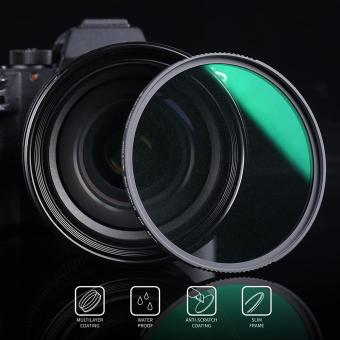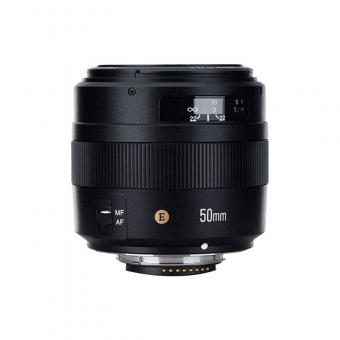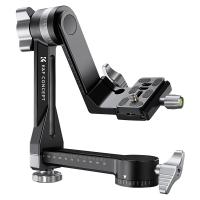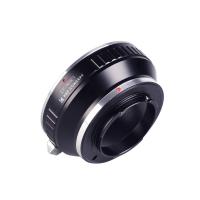How To Take Portraits Digital Camera Cannon ?
To take portraits with a digital camera Canon, you can follow these steps:
1. Choose the right lens: A lens with a focal length between 50mm to 85mm is ideal for portraits.
2. Set the aperture: Use a wide aperture (low f-number) to create a shallow depth of field and blur the background.
3. Adjust the ISO: Set the ISO to the lowest possible value to reduce noise in the image.
4. Use the right lighting: Natural light or a softbox can create a flattering light for portraits.
5. Focus on the eyes: The eyes are the most important part of a portrait, so make sure they are in focus.
6. Pose your subject: Guide your subject to pose in a way that flatters them and creates a natural look.
7. Take multiple shots: Take several shots to ensure you capture the best expression and pose.
8. Edit your photos: Use photo editing software to adjust the exposure, contrast, and color balance to enhance your portraits.
1、 Camera Settings for Portraits

When taking portraits with a digital camera, it is important to consider the camera settings to ensure that the images come out sharp, well-exposed, and with the desired depth of field. Here are some camera settings to consider when taking portraits with a Canon digital camera:
1. Aperture: The aperture controls the depth of field in the image. For portraits, it is recommended to use a wide aperture (low f-number) to create a shallow depth of field and blur the background, which helps to isolate the subject and make them stand out.
2. Shutter speed: The shutter speed controls the amount of light that enters the camera. For portraits, it is recommended to use a fast shutter speed to freeze any movement and avoid blur. However, if you want to create a sense of motion or blur, you can use a slower shutter speed.
3. ISO: The ISO controls the camera's sensitivity to light. For portraits, it is recommended to use a low ISO to reduce noise and maintain image quality. However, if you are shooting in low light conditions, you may need to increase the ISO to get a properly exposed image.
4. White balance: The white balance controls the color temperature of the image. For portraits, it is recommended to use a custom white balance setting to ensure accurate skin tones.
5. Focus: The focus should be set on the subject's eyes to ensure that they are sharp and in focus. You can use the camera's autofocus system or manually focus on the eyes.
In addition to these camera settings, it is also important to consider the composition, lighting, and posing of the subject when taking portraits. With the latest advancements in Canon digital cameras, you can also experiment with different shooting modes, such as portrait mode or creative filters, to add a unique touch to your portraits.
2、 Lighting Techniques for Portraits

Lighting Techniques for Portraits: How to Take Portraits with a Digital Camera Canon
Taking portraits with a digital camera Canon requires a good understanding of lighting techniques. Proper lighting can make or break a portrait, and it is essential to know how to use light to your advantage. Here are some lighting techniques for portraits that you can use with your digital camera Canon:
1. Natural Light: Natural light is the most accessible and affordable light source for portraits. It is best to shoot during the golden hour, which is the hour after sunrise and the hour before sunset. During this time, the light is soft and warm, creating a beautiful glow on the subject's face.
2. Window Light: Window light is another great source of natural light for portraits. It is best to position the subject near a window and use a reflector to bounce light back onto the subject's face.
3. Studio Lighting: Studio lighting is a more controlled lighting source for portraits. It allows you to create different lighting setups and experiment with different lighting ratios. You can use softboxes, umbrellas, and reflectors to create different lighting effects.
4. Off-Camera Flash: Off-camera flash is a great way to add light to your portraits. It allows you to control the direction and intensity of the light. You can use a flash diffuser to soften the light and create a more natural look.
5. Backlighting: Backlighting is a technique where the light source is behind the subject. It creates a beautiful halo effect around the subject and can add depth to the portrait.
In conclusion, lighting is an essential aspect of portrait photography. By understanding these lighting techniques, you can take better portraits with your digital camera Canon. It is important to experiment with different lighting setups and find what works best for you and your subject. With practice, you can master these techniques and create stunning portraits.
3、 Composition Tips for Portraits

How to take portraits with a digital camera Canon:
1. Choose the right lens: A portrait lens is typically a prime lens with a focal length between 50mm and 85mm. A Canon EF 50mm f/1.8 STM lens is a great option for portraits.
2. Set the aperture: A wide aperture (low f-number) will create a shallow depth of field, blurring the background and making the subject stand out. Start with an aperture of f/2.8 or wider.
3. Adjust the shutter speed: A faster shutter speed will freeze motion, while a slower shutter speed will create motion blur. For portraits, a shutter speed of 1/125 or faster is recommended.
4. Use a tripod: A tripod will help keep the camera steady and prevent camera shake, resulting in sharper images.
5. Focus on the eyes: The eyes are the most important part of a portrait, so make sure they are in focus. Use the single-point autofocus mode to focus on the eyes.
Composition Tips for Portraits:
1. Rule of thirds: Divide the frame into thirds both horizontally and vertically, and place the subject at one of the intersections.
2. Leading lines: Use lines in the environment to lead the viewer's eye towards the subject.
3. Framing: Use objects in the environment to frame the subject, such as a doorway or window.
4. Symmetry: Use symmetry to create a balanced and pleasing composition.
5. Negative space: Leave some empty space around the subject to create a sense of balance and focus on the subject.
6. Perspective: Experiment with different angles and perspectives to create a unique and interesting portrait.
In today's digital age, there are many new techniques and trends in portrait photography. One popular trend is the use of natural light and minimal editing to create a more authentic and organic look. Another trend is the use of unconventional poses and compositions to create a more dynamic and creative portrait. As technology continues to evolve, there will undoubtedly be new techniques and trends in portrait photography, but the fundamentals of composition and technique will always remain important.
4、 Posing Techniques for Portraits

How to take portraits with a digital camera Canon? First, it is important to have a good understanding of your camera's settings and capabilities. Shooting in manual mode allows for greater control over the exposure, aperture, and shutter speed, which can all affect the final image. Additionally, using a prime lens with a wide aperture (such as f/1.8 or f/1.4) can create a shallow depth of field, which can help to isolate the subject and create a more pleasing background blur.
When it comes to posing techniques for portraits, there are a few key things to keep in mind. First, it is important to communicate with your subject and make them feel comfortable. This can involve giving them direction on where to look, how to position their body, and how to hold their hands. Additionally, paying attention to the lighting and the background can help to create a more visually appealing image.
One recent trend in portrait photography is the use of natural light and outdoor settings. This can create a more relaxed and natural look, and can also provide interesting textures and colors in the background. Another trend is the use of unconventional poses and angles, such as shooting from above or below the subject, or having them interact with their environment in a unique way.
Ultimately, the key to taking great portraits is to experiment and try new things. Don't be afraid to take risks and push the boundaries of traditional portrait photography. With practice and patience, you can develop your own unique style and create stunning images that capture the essence of your subject.






































